We've had enough warm weather and rain to finally thaw the composting bin pile. We have a cubic meter volume composting bin that was about 1/8th full - before the winter came and froze it in place. Now that the composting pile is fully thawed, today is a good day to climb into the composting bin to give it a turn and heap it to one side for faster and more thorough composting.

In the picture above you can see the approximately 1 meter x 1 meter x 1 meter compost bin. You can also see the Spading Fork with the green handle. A pitch fork could work well too, but the spading fork seems a more appropriate size when I climb into the small space of the cubic meter compost bin. The weight of the properly wet compost may be more difficult to handle with the larger pitch fork as well. You can also see the orange Watering Container, soon I will be running the hose that brings dish and laundry water down from the cabin to fill the dangling watering container until it sprinkles water onto the composting pile.
In the picture below you can see my wintered - rubbish looking compost pile. It's not as sad as it looks. Underneath the thin layer of cardboard boxes that were tossed in there over the winter is mostly half composted grass clippings - about a foot deep. As I was digging around in there, I noticed that the dry brown grass clippings around the edge of the bin looked like they hadn't composted at all. Keeping the compost pile wet is very important for the organic material to break down into fine quality gardening dirt.

Hot Composting
When a good combination of small pieces of dry brown organic material like cardboard, dry leaves, and chipped wood - and green organic material like fresh trimmed leaves, kitchen vegetable scraps, coffee grounds (not filters), and herbivore animal bedding are combined into a large enough compost pile, within a few days the well insulated center of the pile can reach up to 76 degrees Celsius. To keep the aerobic microbes happy and composting quickly, the compost pile has kept wet - drained so not too wet - and well aerated. A composting pile can often be kept well aerated by strategically adding small dry branches at key locations to create air pockets. If a hot compost pile is not getting enough oxygen, it may need to be turned to restart the hot composting process.
For more information about composting - what to compost and what not to compost, this is a link to a Downloadable and Printable .PDF file: http://www.gov.pe.ca/photos/original/WI_KComposting1.pdf
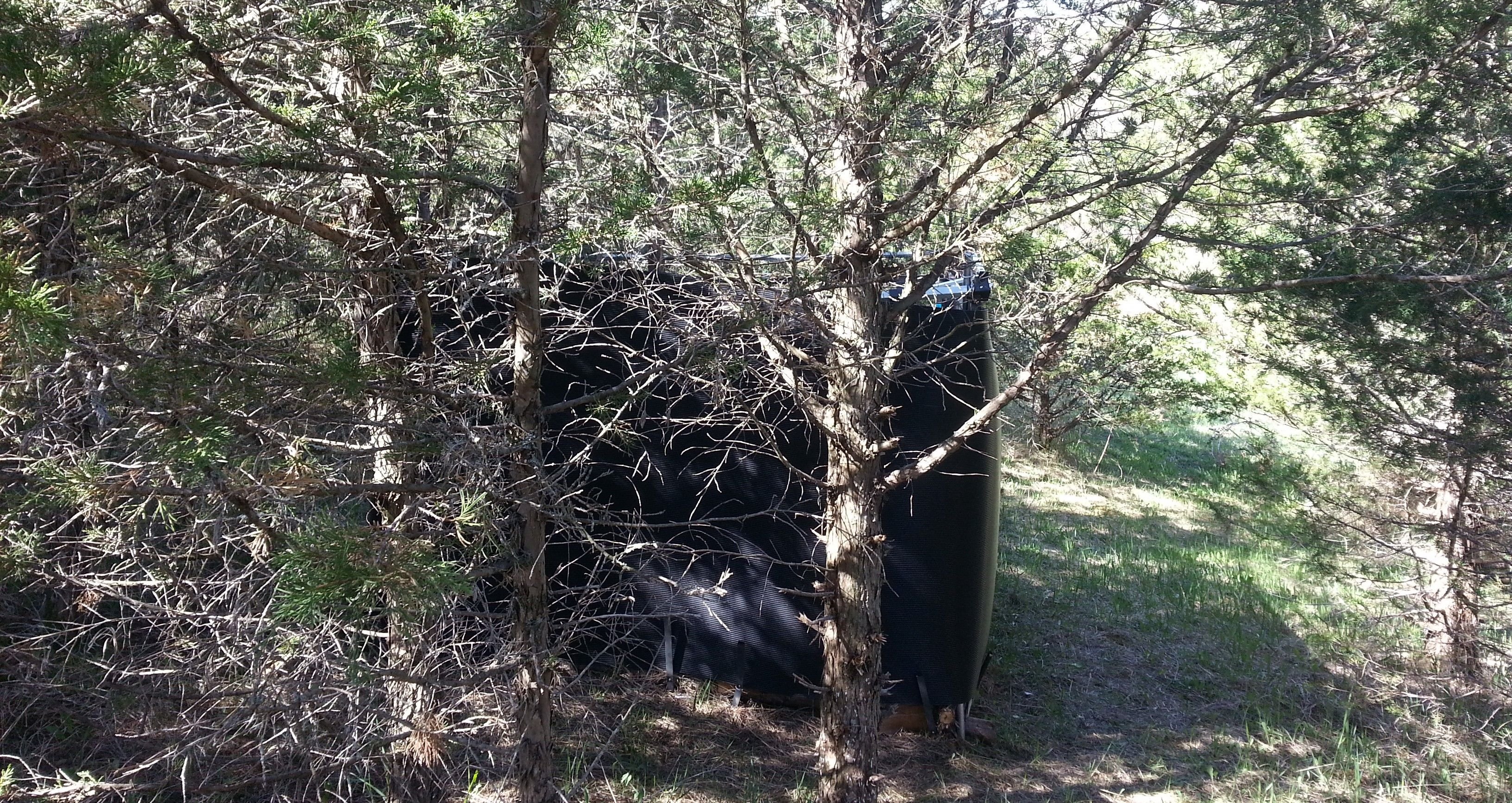
In the picture above you can see the composting bin through the trees as I approach from the cabin. The picture below is an above view from climbing a close tree.
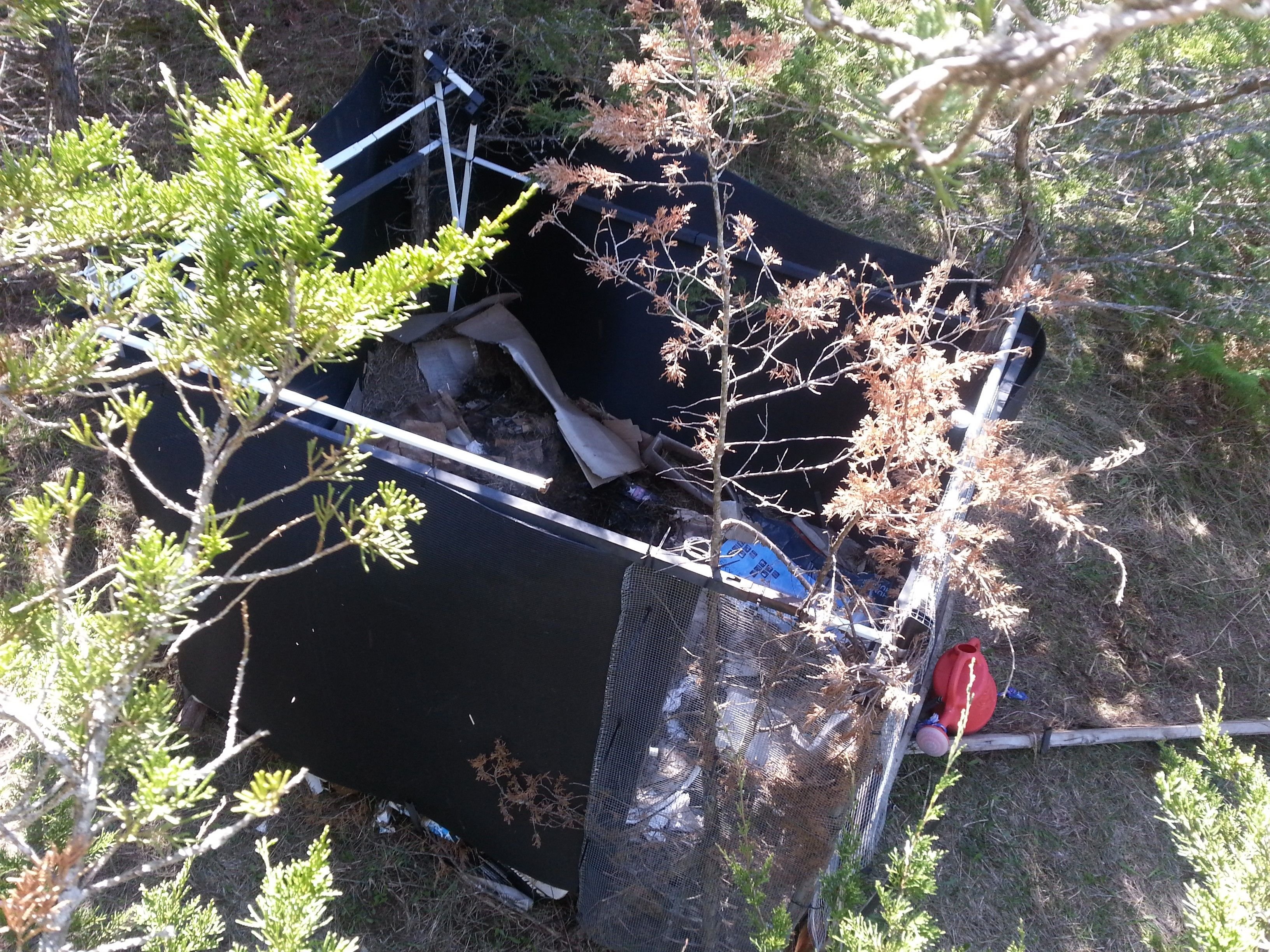
The video below is of the approach and the inside of the freshly turned composting bin.
Cubic Meter Composting Bin Structure
A cubic meter is a good size for a composting bin - there is sufficient organic material in that size of a composting pile to provide enough insulation for hot composting to easily start on the inside. A composting bin is not required, but it would be the most useful if you are composting kitchen scraps or other materials that would attract animals to the pile.
Composting Bin Frame
I used scrap metal poles to construct the frame of the composting bin. For two of the corners metal poles were driven into the ground. Two small and living spruce trees were used for the other two corners.
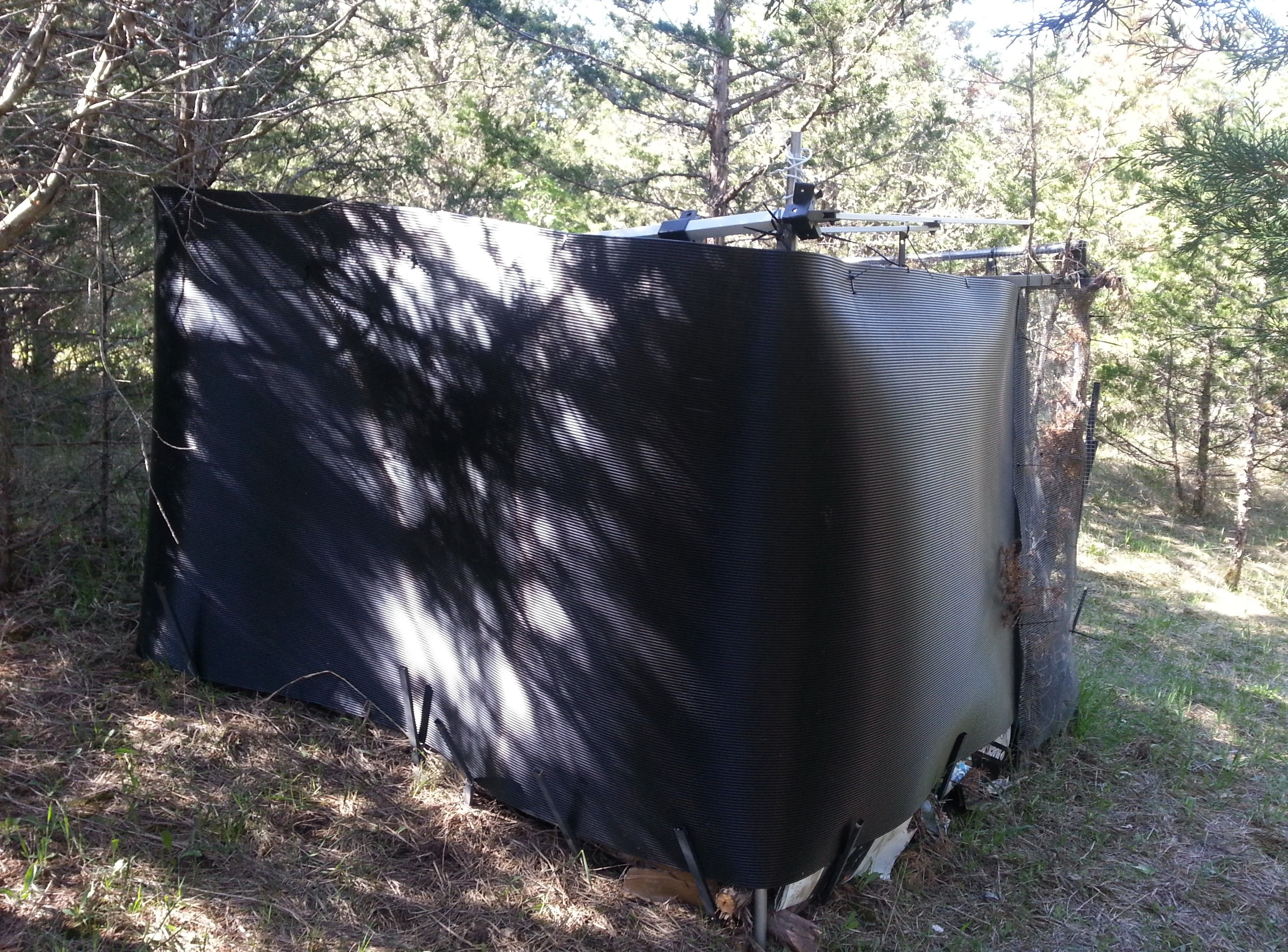
In the picture below you can see one of the metal pole corners of the composting bin where it is driven into the ground.
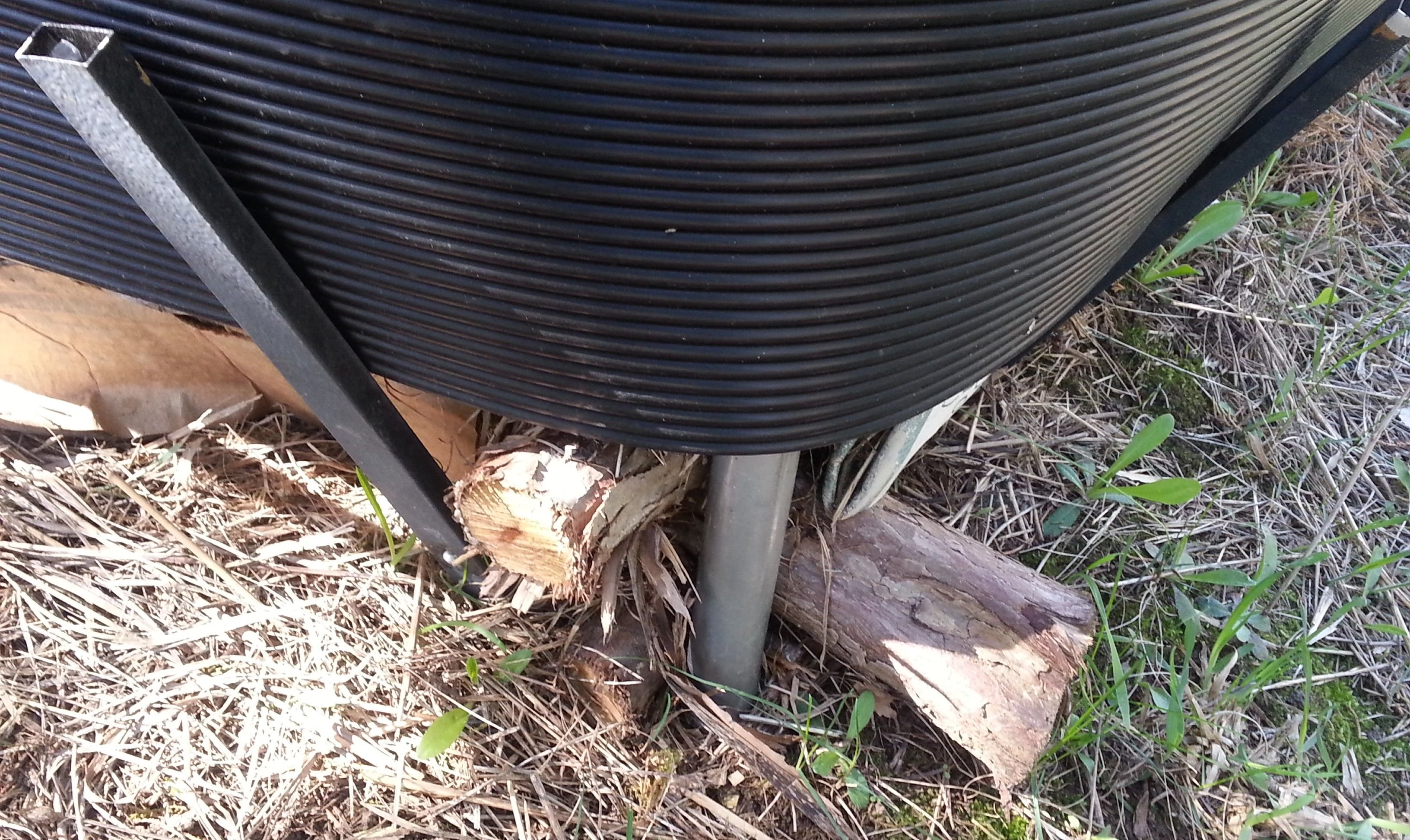
In the picture below you can see the top part of the metal pole where it suspends the upper-horizontal metal poles of the composting bin frame.
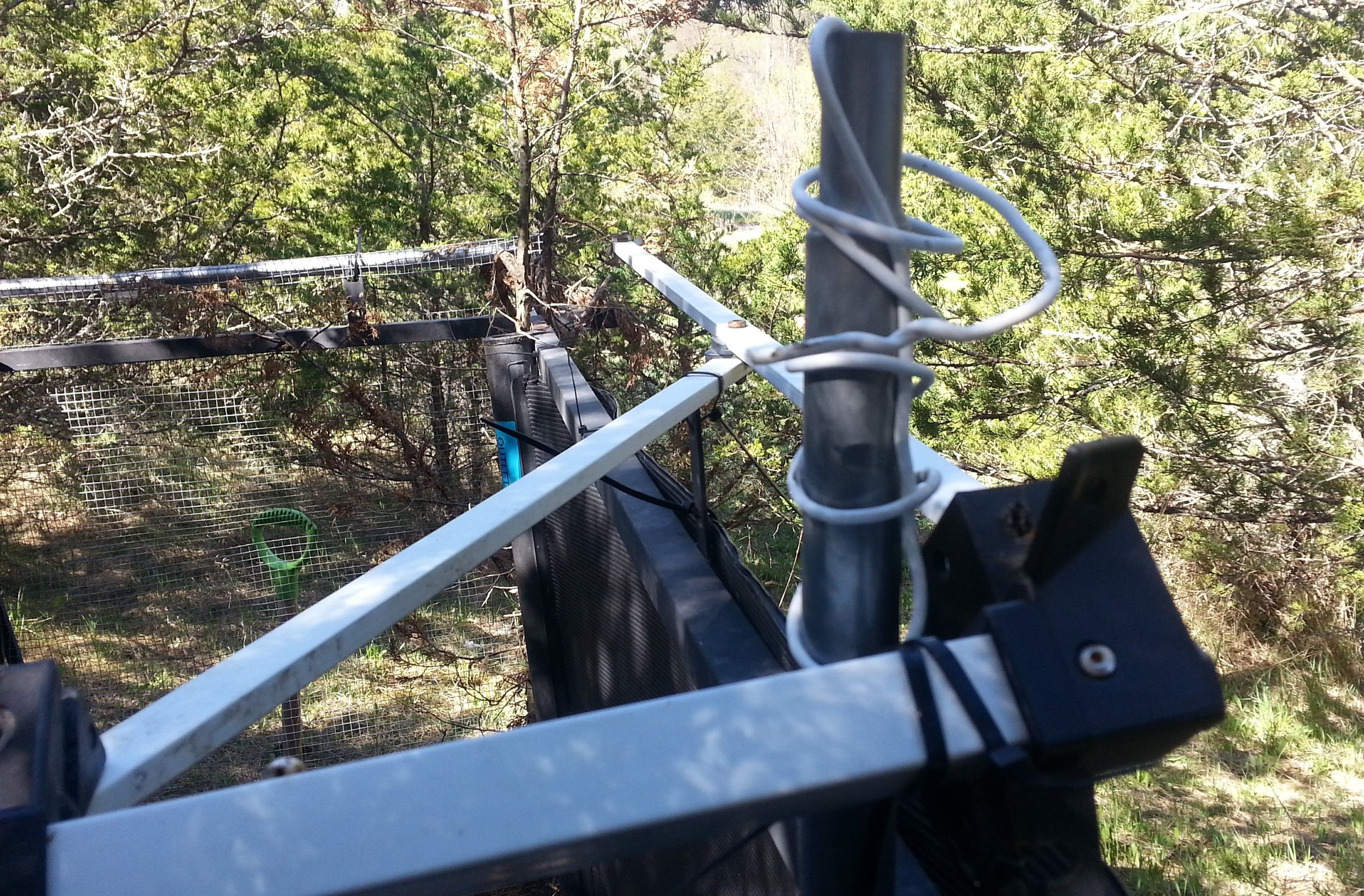
In the picture below you can see how the branches on the far tree corner help hold up the upper-horizontal metal poles of the composting bin frame.
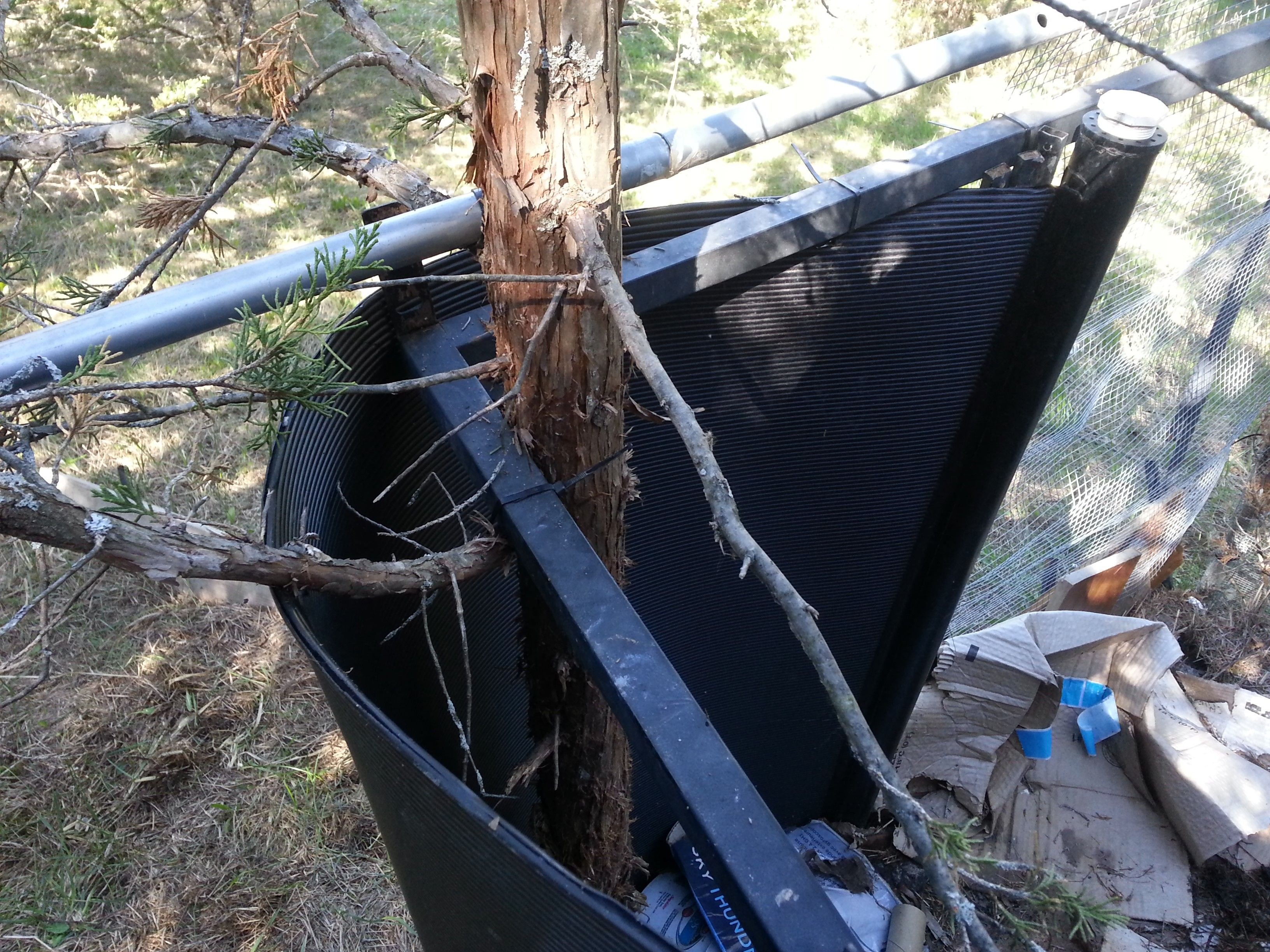
Composting Bin Siding
For the composting bin siding is an old solar water heating plastic sheet. It had small holes in it, someone had discarded it - I had been holding onto it for years. In the pictures below you can see I sliced small slits in the plastic sheet - to run zip-ties through - to attach to siding to the composting bin frame.

In the video below you can see me jump into the composting bin to give the compost a turn and heap it to one side of the bin. With this small amount of compost, heaping will help provide an insulated center for the potential of hot composting - especially with this warmer summer weather on the way.
The compost bin jumping in and turning video starts at regular speed and then speed up to 8x speed for the rest of the video. In the first part of the video you can see me removing plastic plant seedling cups that had left over soil in them. Plastic materials have a noticeably different squeaky sound when forked - as compared to organic material. Any plastic that I discovered was tossed out of the bin for proper disposal.
Video: 8x Speed Compost Bin Turning and Heaping
I the picture below you can see the before and after heaping of the compost pile. The cardboard layer on top was moved to the chicken wire gate to help prevent material from falling through - or the cardboard was forked to smaler pieces and mixed in with the grass clippings.
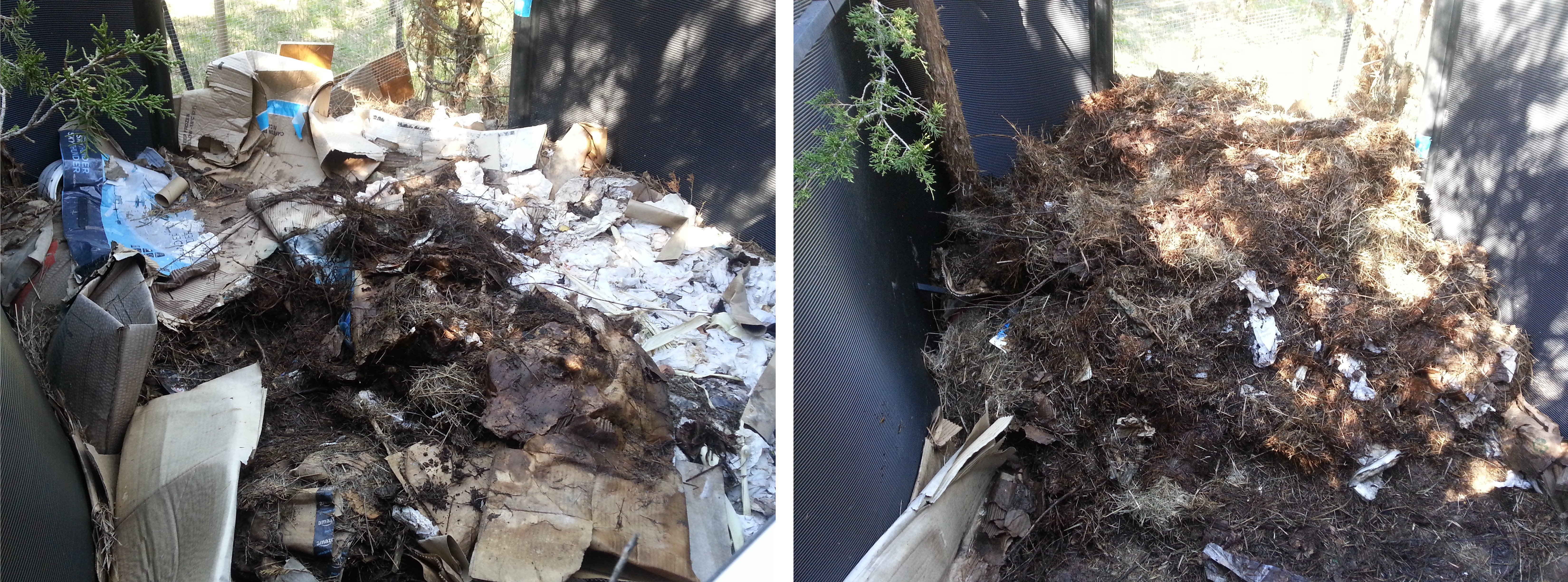
In the picture below you can more easily see how the composting pile is heaped in the bin.

I am hoping to fill this cubic meter composting bin with organic materials by the end of the summer, being sure to keep the longer composted material on the side of the gate. The side opposite the gate is where I will be loading fresh grass clippings and nightly kitchen scraps.
Have a great day!


